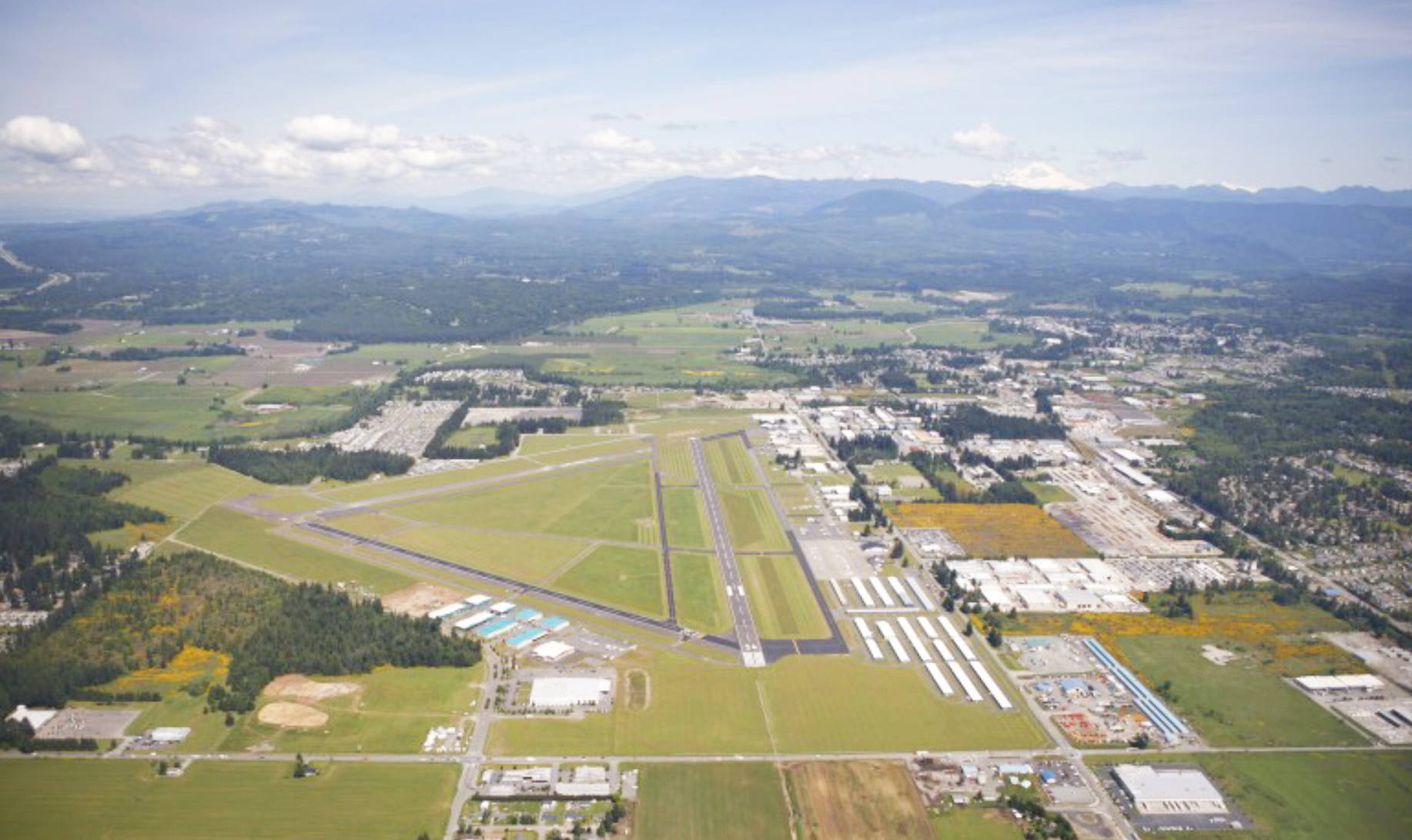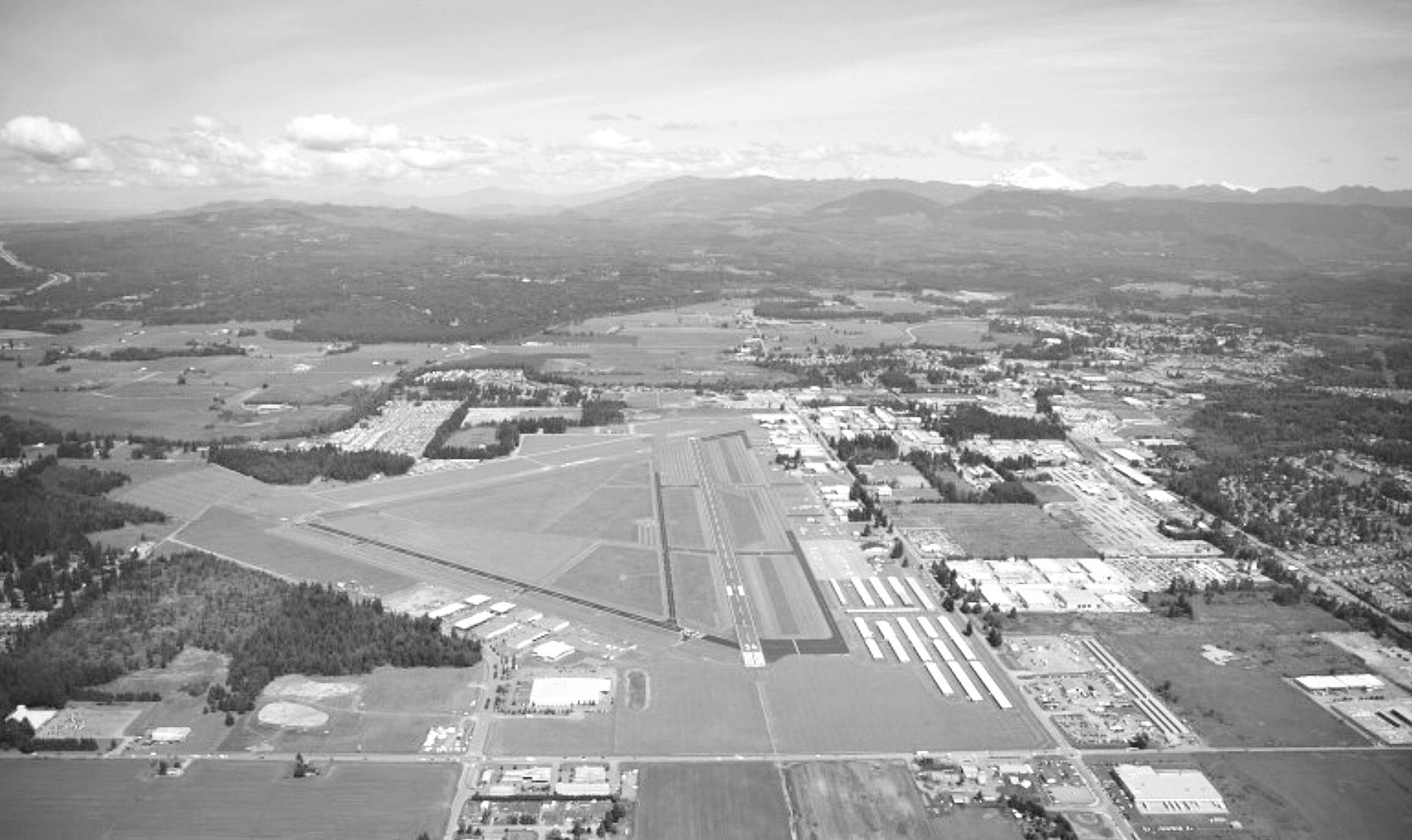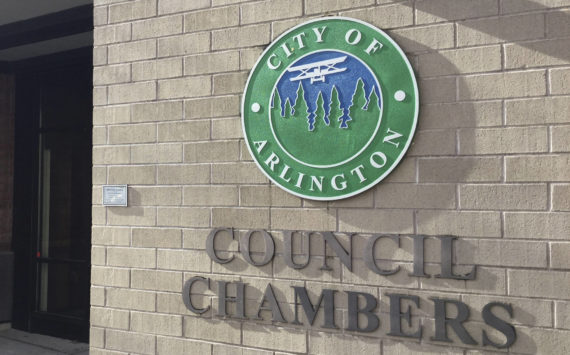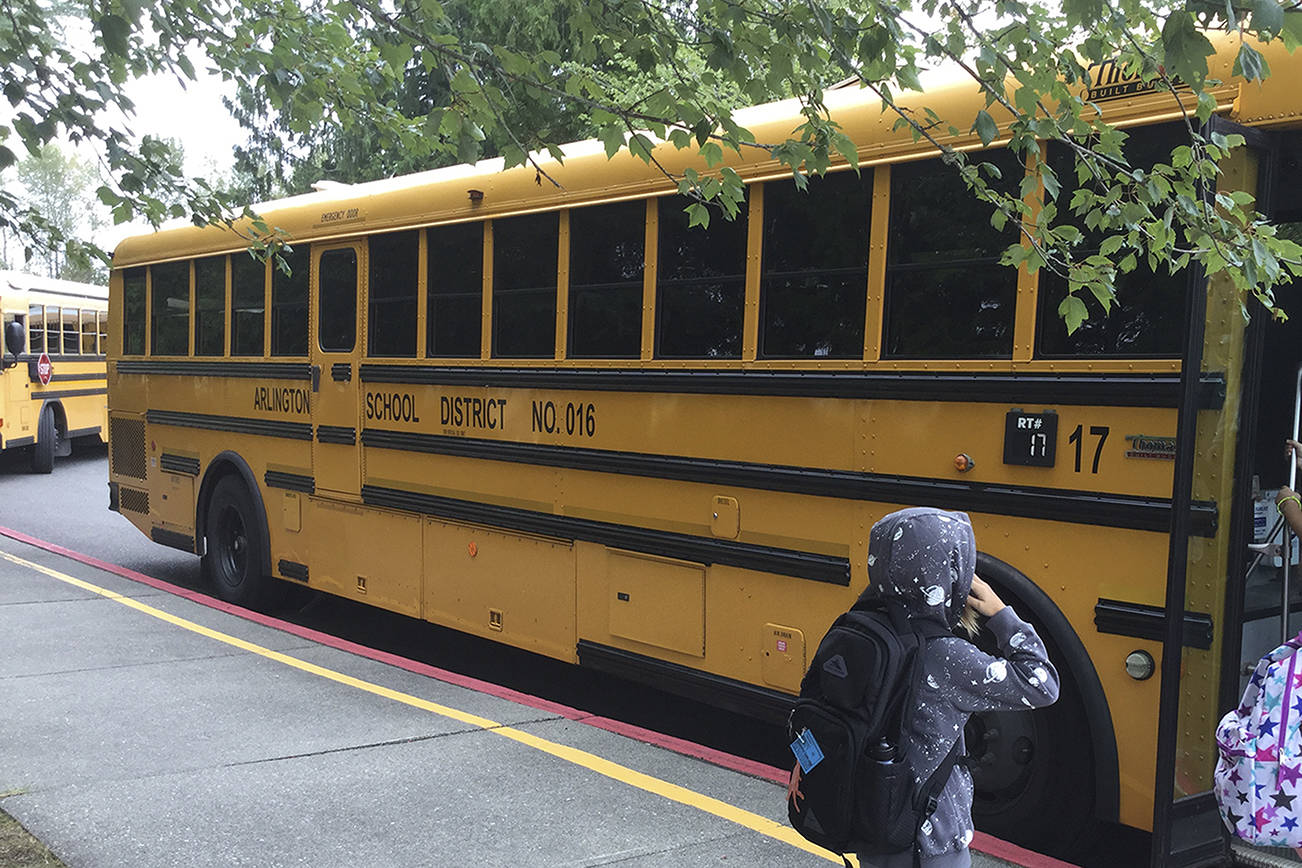ARLINGTON – Passenger air service out of Paine Field is being hailed as an economic boon for Snohomish County since the first Alaska Airlines Boeing 737 took off March 4.
With 24 daily departures and 1.4 million passengers expected each year through the two-gate terminal, partner Propeller Airports estimates the terminal will generate $300 million for the area each year and provide a regional alternative to Seattle-Tacoma International Airport.
But what does all this high-flying new activity mean for nearby general aviation like Arlington Municipal Airport 21 miles to the north?
As a single-engine pilot and occasional commercial air flyer, Airport Manager Dave Ryan called Paine Field’s new service a “wonderful addition to the county,” and he’ll gladly board flights like other elated travelers to avoid going to Sea-Tac. “That drive there and back is a bear.”
Ryan said passenger air service at Paine Field hasn’t affected his airport operations.
“It doesn’t really impact Arlington Airport much, other than the fact that we’ve been getting more inquiries from the general aviation folks at Paine about hangar availability,” Ryan said.
But, he added, “It’s not like the switchboard is flooded.”
Add those to the list of inquiries already coming occasionally from pilots in crowded areas such as Renton, King County and the south Sound who are seeking hangar availability and lower plane storage costs.
Solely measured on the strength of its number of 580-based aircraft – everything from ultralights to corporate jets – Ryan said Arlington is likely the largest general aviation airport among the 132 airports in Washington, and within the top 20 nationwide.
Arlington is also unique in that it has served as an experimental aircraft mecca as far back as Glasair Aviation’s foray into composite kitplanes and ultralights in the ’1980s, and other home-built aircraft activity that continues today. The airport also has ties with the fledging Chinese general aviation market after Glasair sold to Jilin Hanxing Group in 2012 and another China concern, Top Cub, recently built a facility at the airport.
“Arlington really is a great airport,” Ryan said. “Not only are we poised for economic growth, but it’s a beautiful place, mountains on one side the minute you get up in the air, the Sound on the other, and a nice Skagit Valley to the north.”
The location and all that striking scenery come with a price, though.
Arlington’s airport is at 100 percent occupancy for the city-owned hangars with a waiting list of one year, and all but one of the privately owned hangars are full too, Ryan said. Occasionally, space opens up in one of the larger hangars.
Ryan said there are about 400 hangars at Arlington, and the city has 77 private T-hangars, but there are other private T-hangars as well. “There’s definitely a need for more hangar space here,” he said.
T-hangar rates can vary, but generally range from $230 to $475 a month, with the private Carrera hangars on the east and west sides of the airport priced at $375 or more depending on size and other options (Paine Field’s similar hangars average $321 plus tax, up to $498 per month.) The most recent Carrera hangars opened in 2015, featuring insulated sheet rock, some with built-in compressed air, compared to some older hangars that are more similar to pole barns.
Independent of Paine Field, Ryan said Arlington’s airport is in solid financial and operational shape for the long term. The airport has another 100 acres of developable land, long-term leases are generating revenue, and it lies in the center of the Arlington Marysville Manufacturing Industrial Center that will drive more business to airport property.
The airport’s Capital Improvement List for the FAA and WSDOT anticipates $6.7 million in grant-funded runway repaving and LED lighting projects over the next five years, not including the $1.4 million pavement rehabilitation project for the 11/29 crosswind runway being funded by the airport.
When Mayor Barb Tolbert and the City Council visited Washington, D.C. last month, they met with Washington’s Congressional delegation to request $17 million to extend main Runway 16/34 by 677 feet to the north. With much more economic activity anticipated over the next decade, a significant portion of the increase will be corporate aircraft with wider wing spans and faster approach speeds.
Ryan cited another reason he doesn’t expect a lot of relocation from Paine Field is pilots’ flying preferences. “Some people like flying in a controlled environment, where you’ve got a tower, and they’re looking out for you with radar, in the airspace,” he said.
“Others prefer the wide-open spaces, the uncontrolled air space, where they make their own decisions, and they’re not bound by nearly as many regulations,” Ryan said, which is where the Arlington Airport lands. “It just depends on what kind of flying you want to do.”
The Paine Field Master Plan update addressed negative or neutral factors. These were mostly large-scale, such as the recession that impacted general aviation from 1978 to the mid-1990s, fuel crises and airline deregulation.
On the positive side, expansion in the single-engine airplane and amateur-built aircraft markets have been a bright spot in general aviation.
The plan’s only reference to a downside for general aviation related to commercial air service states: “Operations at non-towered U.S. airports have increased, supporting the belief held by many that much of general aviation has been forced out of many towered airports because of the increased commercial air carrier activity.”
Ryan repeated that it’s a pilot’s choice, and the statement doesn’t apply where Paine Field is concerned.
“At a really big airport like Sea-Tac I could see that for sure, but Paine Field?” he said. “Unless they add a lot more flights, and a lot more commercial activity, then I could see that being a factor.”
Ryan said it is more likely that if the skies at Paine become too busy and hangar rates become overpriced, he would expect to see some migration north.
Spokesman Scott North said Paine Field doesn’t anticipate negative impacts on general aviation, and he hasn’t seens signs that pilots are relocating.
The addition of 24 commercial flights is a small percentage of airfield activity, and general aviation activity is centered on the east side, separated from the new air passenger service.
Richard Jones, president of the Paine Field Washington Pilots Association chapter, said “with the 48 departures and arrivals added to the 600-plus typical of a busy day at Paine, we will probably not notice the increase in jet traffic very much.”
The change Paine-based flyers may feel the most is adhering to new heightened security rules for gate access now that commercial air service is on the premises.









